Table of contents
Sunflower seeds ( Helianthus annuus) are a popular snack. They contain a lot of protein, but also a lot of fat. Thanks to gentle drying, they are available in raw food quality ( raw).
Using sunflower seeds in the kitchen:
Sunflower seeds are very popular as a crunchy snack. Once they are shelled, you can enjoy them straight away. Eating sunflower seeds with the shell on is not a good idea.
Can you eat sunflower seeds raw? You can eat sunflower seeds fresh, but to ensure they last longer, they are dried more or less gently before being sold.
To give them an intense, nutty flavor, it is popular to roast the seeds. However, roasted sunflower seeds are less healthy than raw ones because roasting denatures the highly unsaturated fatty acids. Roasted sunflower seeds are called 'Semetschki (Semechki)' in the Balkans, 'pipas de girasol' in Spain and 'Çekirdek' in Turkey. These sunflower seeds are often salted, which makes them even less healthy.
Sunflower seeds are a real treat as a topping on salads, vegan soups or in muesli. Together with linseed,pumpkin seeds, sesame and various other seeds, sunflower seeds can be combined to create your own seed mixture depending on your taste and use.
Whole or chopped, unroasted sunflower seeds can be used for raw food spreads and vegan dips. The seeds make a delicious spread when pureed in a blender with tomatoes, garlic and basil and seasoned withpepper and paprika. Ground sunflower seeds are used as a base for nutty-tasting dough or as a garnish for bread rolls. They are also popular as an ingredient for vegan patties.
Sunflower oil is pressed from the sunflower seeds.
Vegan fruit balls with sunflower seeds:
Ingredients (for approx. 12-14 balls): 100 g dried fruit ( dried apricots, cranberries or similar), 60 ml water, 70 g sunflower seeds (organic), 30 g oat flakes, spices ( cinnamon, vanilla or cocoa powder - as desired).
Preparation: For this vegan recipe, soak the dried fruit in warm tap water (at least 15 minutes) until it has a noticeably softer consistency. Drain the soaking water and keep it. You will need it if the fruit ball mixture takes on a consistency that is too firm. Grind the soaked dried fruit and sunflower seeds in a blender. If necessary, add a little of the soaking water if the mixture is too dry. Refine with cinnamon, vanilla or raw cocoa to taste. Knead the mixture with the oat flakes and form bite-sized balls out of it. The balls can be stored in a sealed container in the refrigerator for about a week.
Vegan recipes with sunflower seeds can be found under the note: " Recipes that have the most of this ingredient ".
| Not only vegans or vegetarians should read this: Vegans often eat unhealthily. Avoidable nutritional mistakes. |
Shopping - where to buy sunflower seeds?
Sunflower seeds are available in various qualities in stores. For a residue-free product, we recommend buying organic sunflower seeds from controlled organic cultivation. For ecological reasons, it is important to pay attention to regional cultivation. Sunflower seeds can be bought from the large supermarket chains such as Coop, Migros, Denner, Volg, Spar, Aldi, Lidl, Rewe, Billa, Edeka or Hofer. You can also buy dried sunflower seeds in organic supermarkets such as Denn's Biomarkt or Alnatura. The sunflower seed harvest takes place from September to October, but sunflower seeds are in season in stores all year round. 1
The trade offers peeled and unpeeled seeds. Edible sunflower seeds have striped or white shells (see the chapter "Cultivation-Harvest"). The latter often come from Turkish cultivation.
The term 'raw' for sunflower seeds advertised as raw food often refers only to the omission of a roasting process. After harvesting, the sunflower seeds are dried, but retailers do not always take the temperature restrictions (e.g. 42 °C for "real" raw food) seriously. The term 'raw food' is not protected by law - unlike organic. A simple test will clarify: are the sunflower seeds still sprouting? Then they are still 'raw'.
The availability of sunflower seeds in the supermarkets mentioned varies depending on the size of the store, catchment area, etc. If you are interested, click on our recorded food prices for the DA-CH countries (above under the ingredient image). There you will find current prices from various supermarkets and their price development.
Found in the wild:
Wild sunflowers ( Helianthus annuus) can be found on compost heaps, 6 on rubble weed beds and on path and roadsides.
Storage:
Sunflower seeds are best stored in an airtight jar in a dry place protected from light. Sunflower seeds have a shelf life of around 6 months, or according to the best-before date on the packaging. 2
Ingredients - Nutritional values - Calories:
The energy content of sunflower seeds is very high at 584 kcal. The calories come mainly from fat (51 g/100g) and protein (21 g/100g). 3
Do sunflower seeds have carbohydrates? The carbohydrate content of 20 g/100g is moderate, with only 2.6 g being sugar. The fiber (8.6 g/100g) covers 34.4% of the daily requirement. 3
Unsaturated fatty acids: The ratio between omega-6 and omega-3 fatty acids is very unfavorable in sunflower seeds (can even be over 383:1). In contrast, linseeds have an extremely healthy ratio of 1:4 (see ingredient tables and link in the box above). The ratio is the opposite for linseeds, which contain less potentially inflammatory LA (omega-6) and more anti-inflammatory omega-3 in the form of ALA. According to the Federal Office of Public Health ( FOPH), the average value should not exceed 5:1 (LA:ALA). Erb-Müesli, for example, can correct this. If you enter the "sort by health values" option in the ingredients list, you can select healthy ingredients or those that compensate for a deficiency. The same applies to recipes, e.g. by sorting by LA:ALA ratio. You can see the importance of this aspect in the link to olive oil, where we explain it in detail.
Sunflower seeds are very rich in vitamin E with 35 mg/100g, similar to almonds (26 mg/100g). They also contain around 0.35 g of the essential amino acid tryptophan per 100g, which covers around 140% of the daily requirement. Wheat germ (0.32 g/100g) and linseed have a similarly high content. (0.30 g/100g).
Sunflower seeds also contain plenty of thiamine (vitamin B1) with 1.5 mg/100g. Linseeds have a comparable content (1.6 mg/100g) and unpeeled hemp seeds (1.3 mg/100g). 3
The complete ingredients of raw sunflower seeds, the coverage of the daily requirement and comparison values with other ingredients can be found in our nutrient tables. In the article Nutrients explained you will get a detailed insight into the topic.
Dangers - Intolerances - Side effects:
Sunflower seeds are a rare source of allergies. Nevertheless, there are cases of occupational allergies. Bird breeders are one of the occupational groups that are particularly susceptible to sunflower allergies. Sunflower seeds are a common ingredient in bird feed. However, there are also cases of people who have had an allergic reaction to sunflower seeds when there were no underlying occupational or hobby-related allergies.
Although sunflower oil is considered safe for patients with food allergies because it contains practically no proteins, numerous exceptions have been confirmed. Symptoms of an allergic reaction to sunflowers (in general) include oral inflammation, bronchial asthma, inflammation of the nasal mucosa, edema and contact dermatitis. In rare cases, consumption of the seeds can cause bronchial asthma or anaphylactic reactions. 1
In addition, eating sunflower seeds can worsen acne (acne vulgaris). 5
Health aspects - effects:
Are sunflower seeds healthy? The health benefits of sunflower seeds include the positive effect on blood pressure and cholesterol levels. The phytosterols contained in the seeds result in a reduction in cholesterol levels. It has also been proven that sunflower seeds have a healing effect on colds and coughs. 4 However, due to the high fat content and the unfavorable fatty acid ratio (omega-6 to omega-3), you should not consume them every day.
Folk medicine - natural healing:
Sunflower seeds are not used in folk medicine, but the oil extracted from the seeds is. Externally,sunflower oil is massaged into aching limbs. Internally, the oil is said to have a laxative effect. The petals of the sunflower are also used in folk medicine. As a tincture or tea, they are effective against fever, 6 for example in cases of malaria or lung diseases.
Occurrence - Origin of sunflowers:
Sunflowers originally come from North and Central America. Archaeological finds show that sunflowers were domesticated in the Mississippi region and in Mexico around 2500 BC. In the 16th century, Spanish sailors brought sunflower seeds to Europe. 4,7 The most important modern growing areas for sunflowers are Russia, Ukraine and Argentina (2020). 8
Growing in the garden or as a potted plant:
Sunflowers can be grown well in your own garden or in a pot. They need a sunny, warm and wind-protected location. Frequent watering of the root area and weekly fertilization with compost or nettle liquid manure is necessary for the sunflower to thrive. Seedlings that you have grown yourself or bought can be planted in the bed or pot from mid-May. Sunflowers bloom from July to September, although newer varieties can even bloom well into October. For growing in a pot, choose a small-growing variety and water daily so that the roots do not dry out. 6.9
Cultivation - Harvest:
The annual Asteraceae can grow up to a height of 3 m, although this is rarely the case. 10 Their strong stems are filled with pith and have alternately arranged, heart-shaped, triangular, rough hairy leaves. The large flower heads can reach a diameter of up to 35 cm. After the flowering period (July to September) the sunflower seeds can be harvested.
The fat content of the kernels varies depending on the variety; less oil-containing varieties (non-oilseed) are used for kernel production than for sunflower oil (oilseed). 13,14
The color of the shell can also vary. Varieties with large, longitudinally striped seeds are often used to grow edible sunflower seeds, while oil sunflowers are smaller and have a deep black seed shell. 14 There are also varieties with white and red seed shells. 15 Harvesting should only take place when the seeds are ripe. In varieties with striped and black sunflower seeds, the white shell color indicates that the seeds are unripe.
For the mechanical harvesting of mature sunflower seeds, short-stemmed varieties are preferred. 12
Genetically modified sunflowers are controversial. They are said to be resistant to drought, heat, insecticides, herbicides and plant diseases. Such plants have been approved for cultivation in Canada, for example. 11
Can you eat fresh sunflower seeds? This is possible without any problems, as mentioned above. However, fresh sunflower seeds are first dried after harvesting; sometimes they are roasted before they go on sale.
Danger of confusion:
As it belongs to the same genus, Helianthus annuus could be confused with Helianthus tuberosus when it is in flower. However, it is not the oil-containing seeds of this plant that are used, but the tuber: it is known commercially as Jerusalem artichoke.
Animal protection - species protection - animal welfare:
Sunflowers with their large basket flowers are an ideal source of pollen and food for bees, insects and birds. Grown in small gardens, meadows or as flowering areas, they help protect species.
General information:
The sunflower ( Helianthus annuus) belongs to the daisy family. A characteristic feature of sunflowers is their ability to turn their heads towards the sun (heliotropism). 1
Alternative names:
Common names for the sunflower are: God's eye, gold flower, sun crown, sun star. 6
The drug name for sunflower petals is Helianthi flos, and sunflower oil is Helianthi oleum.
In English, sunflower seeds are called sunflower seeds.
Keywords for use:
Sunflower seeds are an important ingredient in many bird food mixtures. Sunflower oil can be a component of ointments and creams as well as the filling material in soft gelatin capsules.
Literature - Sources:
Bibliography - 14 Sources
| 1. | Ukleja-Sokolowska N, Gawronska-Ukleja E, Zbikowska-Gotz M, Bartuzi Z, Sokolowski L. Sunflower seed allergy. Int J immunopathol Parmacol. 2016 Sep;29(3):498-503. |
| 2. | Bzfe.de (Bundeszentrum für Ernährung) Lebensmittellagerung im Haushalt. |
| 3. | USDA United Sates Department of Agriculture. |
| 4. | Adeleke BS, Babalola OO. Oilseed crop sunflower (Helianthus annuus) as a source of food: Nutritional and health benefits. Food Sci Nutr. 2020 Jul 31;8(9):4666-4684. |
| 5. | Mohebbipour A, Sadeghi-Bazargani H, Mansouri M. Sunflower Seed and Acne Vulgaris. Iran Red Crescent Med J. 2015 Sep 14;17(9):e16544. |
| 6. | Pahlow M. Das grosse Buch der Heilpflanzen. Gesund durch die Heilkräfte der Natur. Nikol: Hamburg. 2013. |
| 7. | Lentz DL, et al. Sunflower (Helianthus annus L.) as a pre-Columbian domesticate in Mexico. Proceedings of the National Academy of Sciences of the United States of America, 2008 Apr 29;105(17):6232-6237. |
| 8. | FAOSTAT Food and Agriculture Organization of the United Nations. Crops Sunflower Seeds. |
| 10. | Schilling E. Helianthus annuus Linnaeus. Flora of North America North of Mexico. Oxford University Press: New York, Oxford. 2006;21. |
| 11. | Pini U. Das Bio-Food Handbuch. Ullmann: Hamburg, Potsdam. 2014. |
| 12. | Brücher H. Tropische Nutzpflanzen. Ursprung, Evolution und Domestikation. Springer: Berlin - Heidelberg - New York. 1977. |
| 13. | Khurana S, Singh R. Sunflower (Helianthus annuus) Seed. In: Tanwar B., Goyal A. (Eds.). Oilseeds: Health Attributes and Food Applications. 2021: 123ss. |
| 14. | Reiner H. Speisesonnenblumenkerne - Spitzenprodukte der modernen Schälmüllerei. Mühle + Mischfutter. 2011 Feb 10;148(3):74-77. |
| 15. | Reiner H. Die Sonnenblume (Helianthus annuus L.) Geschichte einer Nutzpflanze aus Amerika. Kataloge des Oberösterreichischen Landesmuseums (Linz), Neue Folge, Nr. 61 (1992): 257-264. |

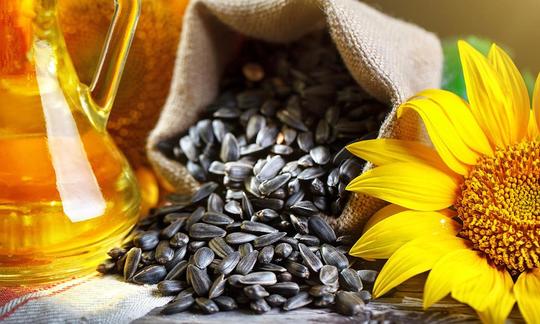

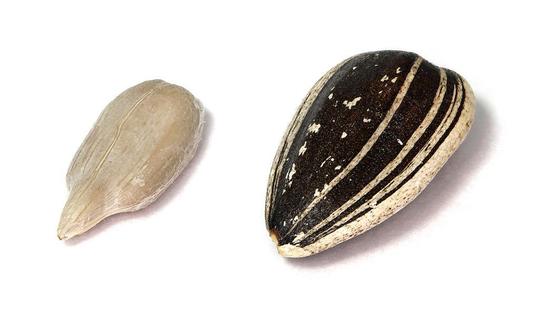

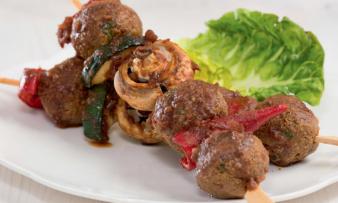
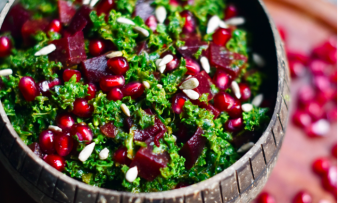
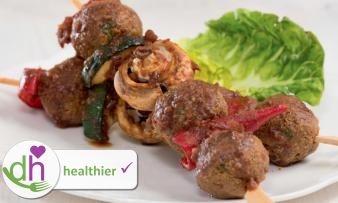





Comments